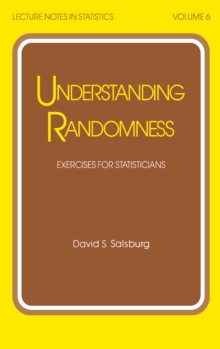
Block Designs: A Randomization Approach : Volume II: Design PDF
by Tadeusz Calinski, Sanpei Kageyama
Part of the Lecture Notes in Statistics series
Description
The book is composed of two volumes, each consisting of five chapters.
In Vol- ume I, following some statistical motivation based on a randomization model, a general theory of the analysis of experiments in block designs has been de- veloped.
In the present Volume II, the primary aim is to present methods of that satisfy the statistical requirements described in constructing block designs Volume I, particularly those considered in Chapters 3 and 4, and also to give some catalogues of plans of the designs.
Thus, the constructional aspects are of predominant interest in Volume II, with a general consideration given in Chapter 6.
The main design investigations are systematized by separating the material into two contents, depending on whether the designs provide unit efficiency fac- tors for some contrasts of treatment parameters (Chapter 7) or not (Chapter 8).
This distinction in classifying block designs may be essential from a prac- tical point of view.
In general, classification of block designs, whether proper or not, is based here on efficiency balance (EB) in the sense of the new termi- nology proposed in Section 4. 4 (see, in particular, Definition 4. 4. 2). Most of the attention is given to connected proper designs because of their statistical advantages as described in Volume I, particularly in Chapter 3.
When all con- trasts are of equal importance, either the class of (v - 1; 0; O)-EB designs, i. e.
Information
-
Download - Immediately Available
- Format:PDF
- Publisher:Springer New York
- Publication Date:06/12/2012
- Category:
- ISBN:9781441992468
Other Formats
- Paperback / softback from £78.95
Information
-
Download - Immediately Available
- Format:PDF
- Publisher:Springer New York
- Publication Date:06/12/2012
- Category:
- ISBN:9781441992468










